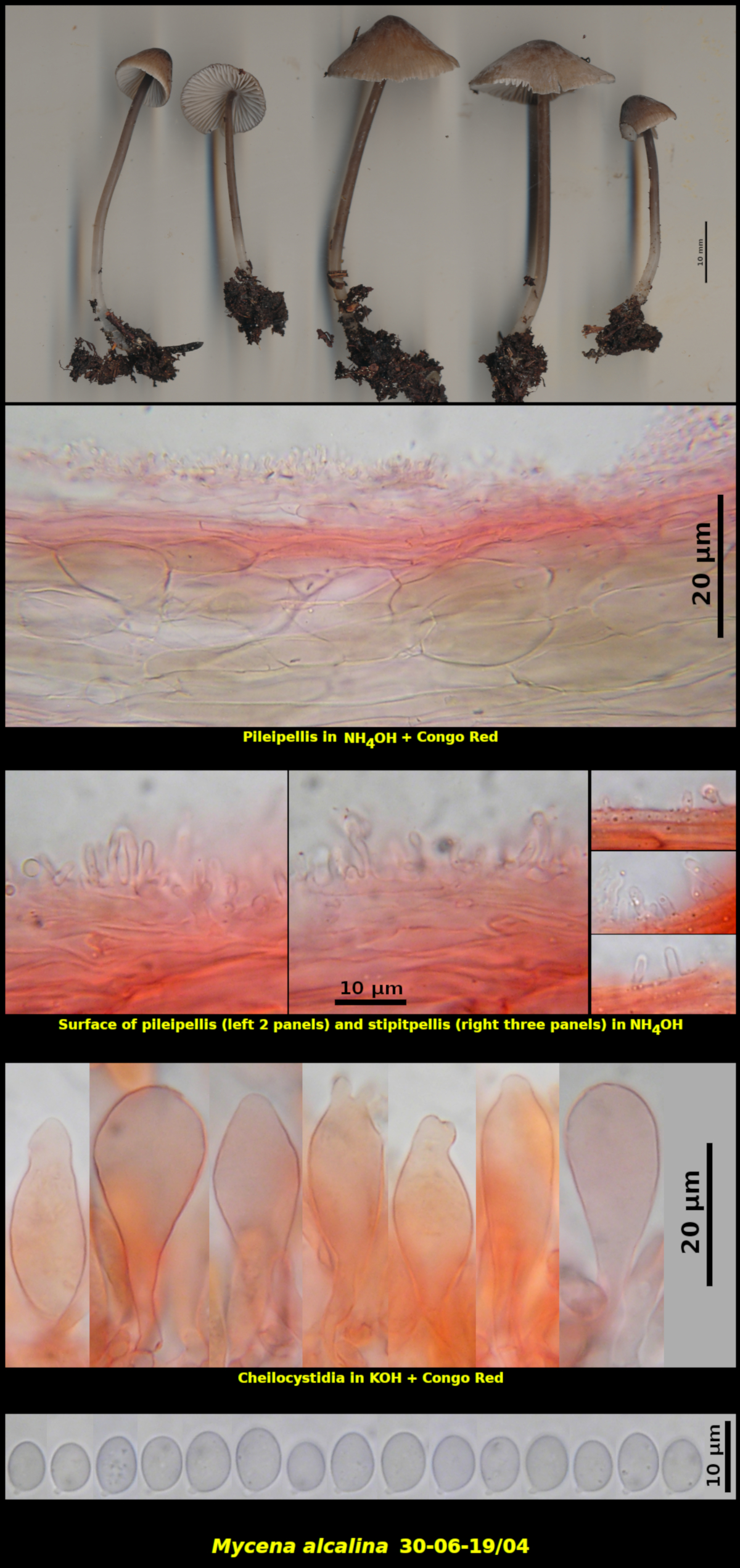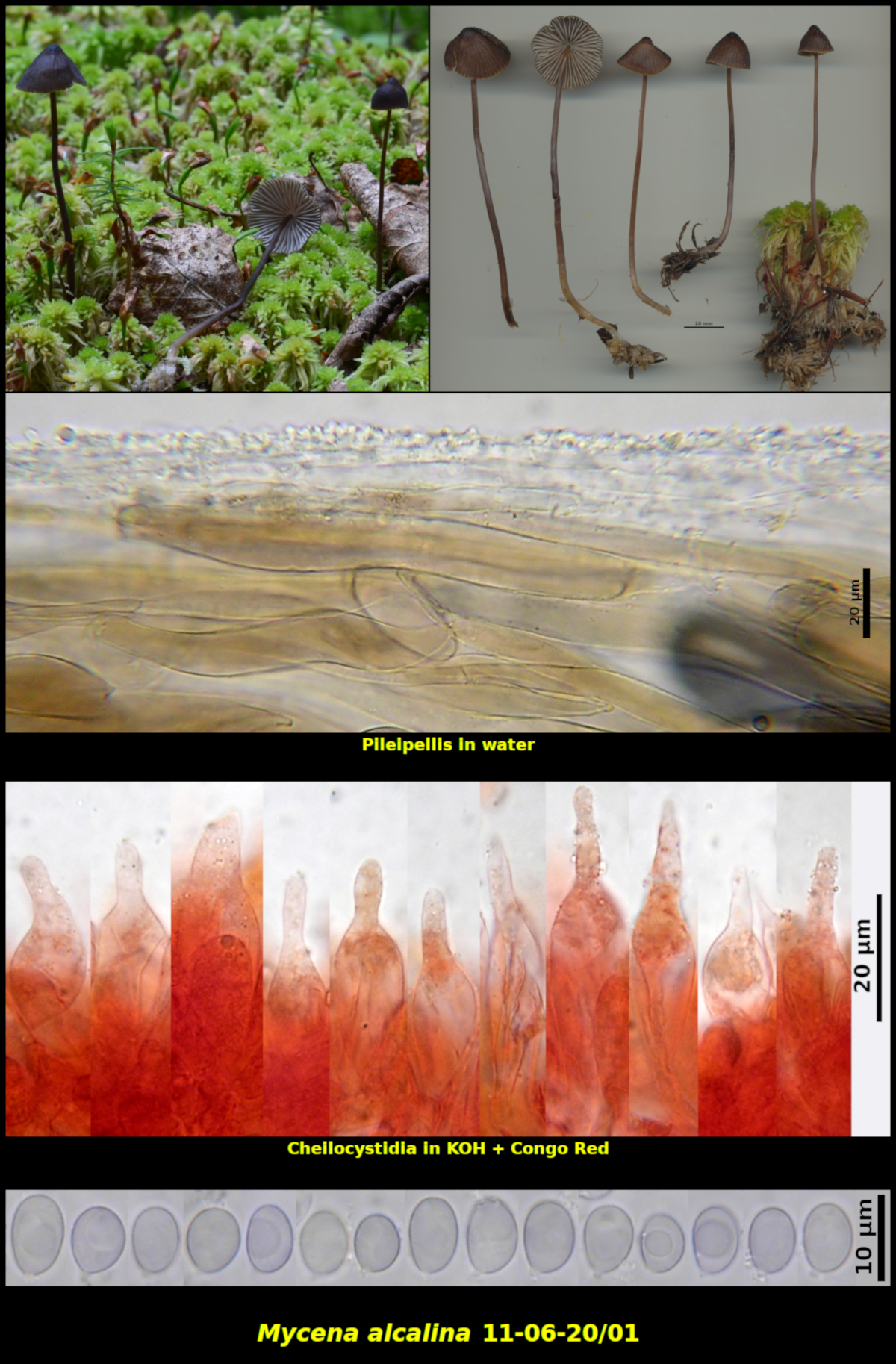Fleshy Fungi of New Brunswick >>
Mycena sanguinolenta
Mycena alcalina (Fr.) P. Kumm.


Two collections:
1. Gregarious (4) on a highly rotted and moss-covered conifer log in forest dominated by Abies balsamea and Picea mariana. Kennedy Lakes Protected Natural Area, New Brunswick
Basidiospores white in spore print, broadly ellipsoidal, smooth, amyloid, 6.7-9.4(10.1) x 5.2-7.1 μm, Q = 1.23-1.51 (average[31]: 7.9 x 5.9 μm, Q = 1.35). Cheilocystidia forming a sterile margin, clavate to ventricose, sometimes with one or two apical protuberances, 33-46 x 10.3-14.2 μm. Pileipellis a thin cutis above a subcutis or enlarged hyphae, with surface hyphae producing a turf of mostly unbranched finger-like protuberances up to 10 x 1.5-1.8 μm. Stipitipellis a cutis of hyphae resembling those of the pileipellis but with protuberances less densely distributed. Basidia 4-spored, clamped at the base.
2. Scattered (6) in a Sphagnum carpet in a shallow natural drainage depression, associated with Abies balsamea and Picea rubens, Little Lepreau, New Brunswick (11-06-20/01).
Basidiospores white in spore print, broadly ellipsoidal, smooth, amyloid, 6.7-9.3 x 5.0-6.3 μm, Q = 1.22-1.57 (average[26]: 7.9 x 5.7 μm, Q = 1.40). Cheilocystidia abundant, mostly ventricose-rostrate with a prominent beak, 33-55 x 9.5-12.8 μm. Pleurocystidia scattered but not difficult to find, most abundant toward the edge of the lamella, similar to the cheilocystidia. Basidia 4-spored, probably clamped at the base – the hymenium is very compact in dried material and difficult to separate without damaging both basidia and cystidia. Pileipellis a thin cutis of hyaline, narrow hyphae, with uppermost hyphae covered with coralloid protuberances, with a subpellis of much broader sausage-shaped hyphae containing an internal brown pigment. Stipitipellis a cutis of hyphae covered with protuberances similar to those of the pileus.
A large Mycena with a dark brown pileus and an alcaline or bleach-like odour usually growing on rotten wood. The pileipellis and stipitipellis are characterized by a turf of upright growths, visible in the photograph as a greyish dusty surface on the fourth cap to the right. Because the growths are less dense on the stipitipellis, the stipes do not show this dustiness prominently.
These collection fits well within Smith's (N.A. Species of Mycena, 1947) concept of M. alcalina. However, as Smith pointed out, that concept allows for a considerable amount of variation from one collection to another and may in fact encompass more than one species. The two collections here illustrate this variability by their differences in cheilocystidia and pileipellis, as well as by their very different substrates. Aronsen, in his excellent Mycena pages discusses some European taxa that belong somewhere within this complex, but none is a precise fit for ours, M. stipata perhaps being the closest.
Photographs: D. Malloch (30-06-19/04, 11-06-20/01).